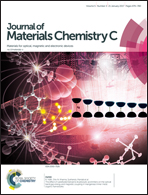Color tunable dual-phase transparent glass ceramics for warm white light-emitting diodes
Abstract
Currently, Ce3+:Y3Al5O12 phosphor converted white light-emitting diodes suffer from a deficiency of adequate red components and easy aging of the organic silicone matrix. Herein, Ce3+/Mn2+/Si4+:Y3Al5O12 phosphors were synthesized via a traditional solid-state reaction and they can emit intense red luminescence, which is attributed to the Mn2+:4T1 → 6A1 spin-forbidden transition under the excitation of blue light via efficient energy transfer from Ce3+ to Mn2+. Temperature-dependent emission spectra and luminescent decay curves evidence that Mn2+ activators partition into both the Al3+ octahedral and Y3+ dodecahedral sites, whereas the Si4+ sites located in the Al3+ tetrahedral site are charge compensators. Furthermore, inorganic Ce3+:Y3Al5O12 and Ce3+/Mn2+/Si4+:Y3Al5O12 dual-phase transparent glass ceramics were successfully fabricated via a low-temperature co-sintering technique to replace the phosphor in organic silicone as a color converter, and red to yellow tunable luminescence can be easily achieved by controlling the content of red phosphor in the glass matrix. Note that by combining the fabricated dual-phase glass ceramics with the InGaN blue chip, warm white light-emitting diodes with a superior optical performance and excellent heat-resistance stability were successfully constructed.


 Please wait while we load your content...
Please wait while we load your content...